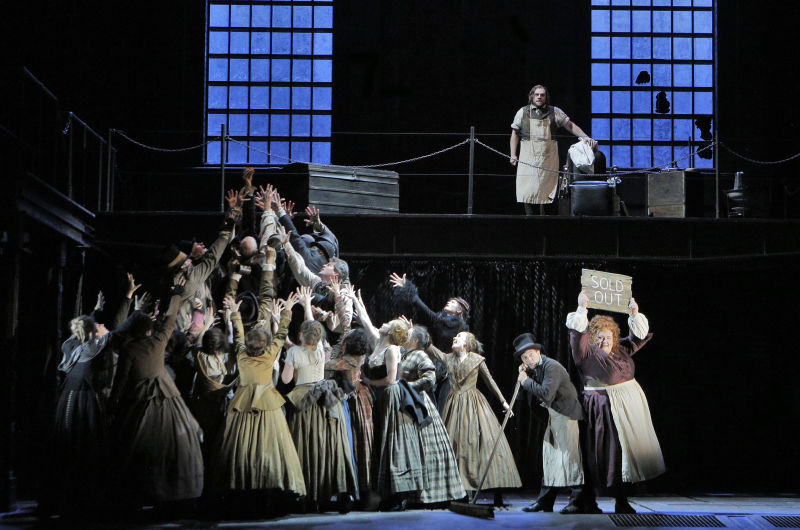On the surface, Stephen Sondheim’s brilliant Sweeney Todd has a lot in common with your garden variety opera: a convoluted plot, tons of singing, madness, a singular obsession with revenge, class warfare, love triangles — all capped off with a very high body count.
San Francisco Opera opened a production of this funhouse thriller about the murderous spree of a barber in Victorian London (popularized a few years ago in a Hollywood movie starring Johnny Depp) on the War Memorial Stage last weekend. It’s yet another example of musical theater infiltrating the opera house worldwide. Sweeney Todd is the third Broadway-oriented production that San Francisco Opera has staged in recent years, following Porgy and Bess in 2009, and Show Boat last year. While this latest musical is both compelling and spectacular, one wonders what the presentation of musical theater pieces like this on the opera stage means for the future of the operatic art form as a whole.
Agonize all you want about whether or not Sweeney Todd is an opera or a musical, but the piece already has a venerable history in the opera house starting with a 1984 production at Houston Grand Opera under none other than San Francisco’s outgoing general director David Gockley, who was at the helm in Houston at that time. The work has been performed at major houses like London’s Royal Opera House and the Lyric Opera of Chicago. San Francisco Opera’s co-production, first seen at the Paris Theatre du Chatelet in 2011 and subsequently at Houston Grand Opera in April, is directed again here by Lee Blakeley.
It’s no surprise to see Sondheim co-opted by opera companies. Sondheim has a huge following, and for good reason, as his work is sophisticated and wry. Sweeney Todd clearly brings in a remarkably attentive audience to San Francisco Opera; there was complete silence for most of the performance last Saturday, which is not the case normally at the War Memorial Opera House.
Which brings me to my main concern about Sweeney Todd: Musical theater usually amplifies the voices of the actors to enable the words to carry over instruments like drums and electric guitar, and because the performers often work eight shows a week without a night off. Conversely, opera singers’ voices are rarely amplified. They’re trained to project their voices to the back of a 3,000-seat hall. But for this production, the performers are all miked. This is no surprise as Sweeney Todd is musical rather than operatic fare. Also, the words in Sondheim are paramount, and San Francisco Opera wants to make sure that everyone can hear them properly.


